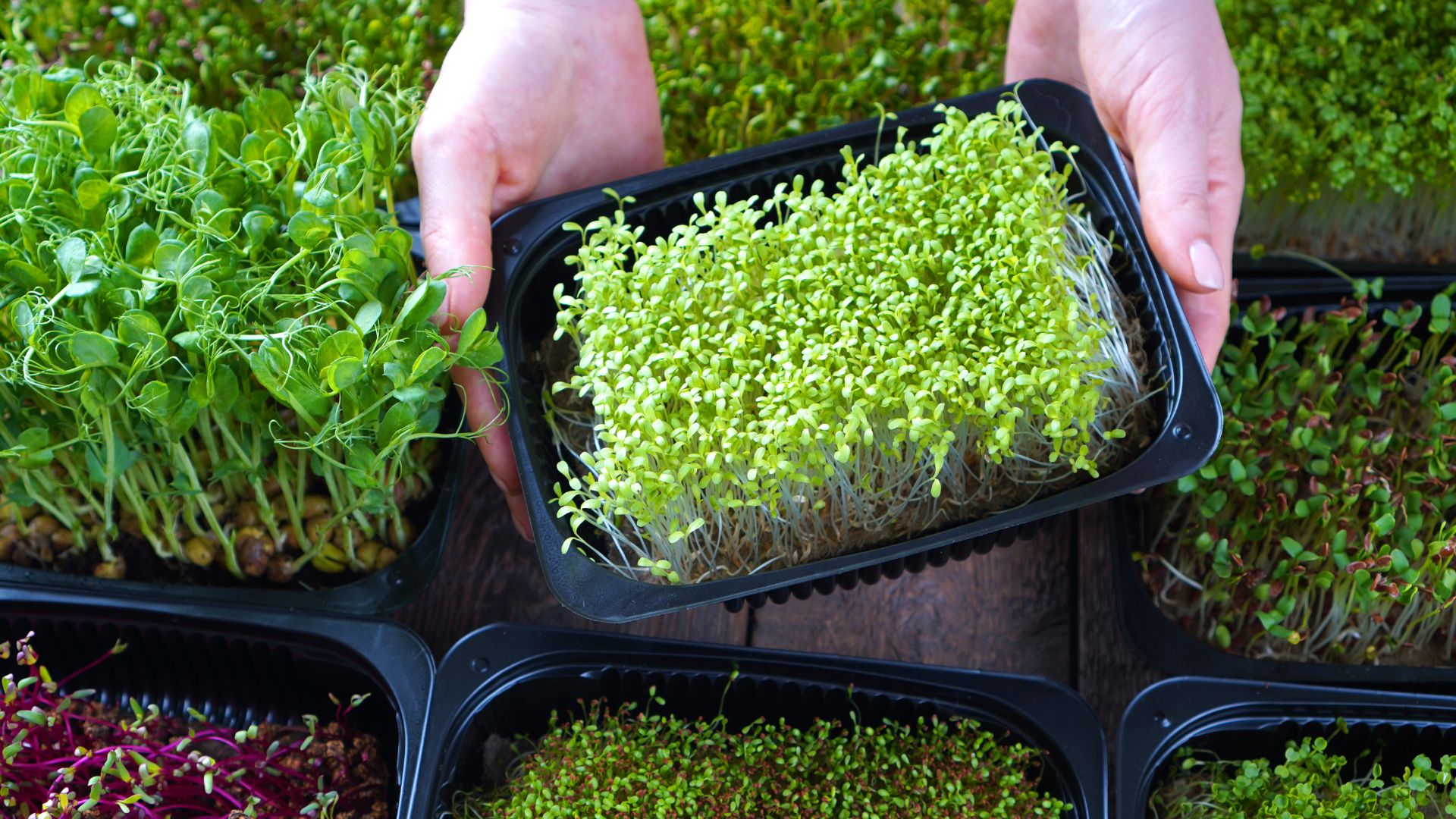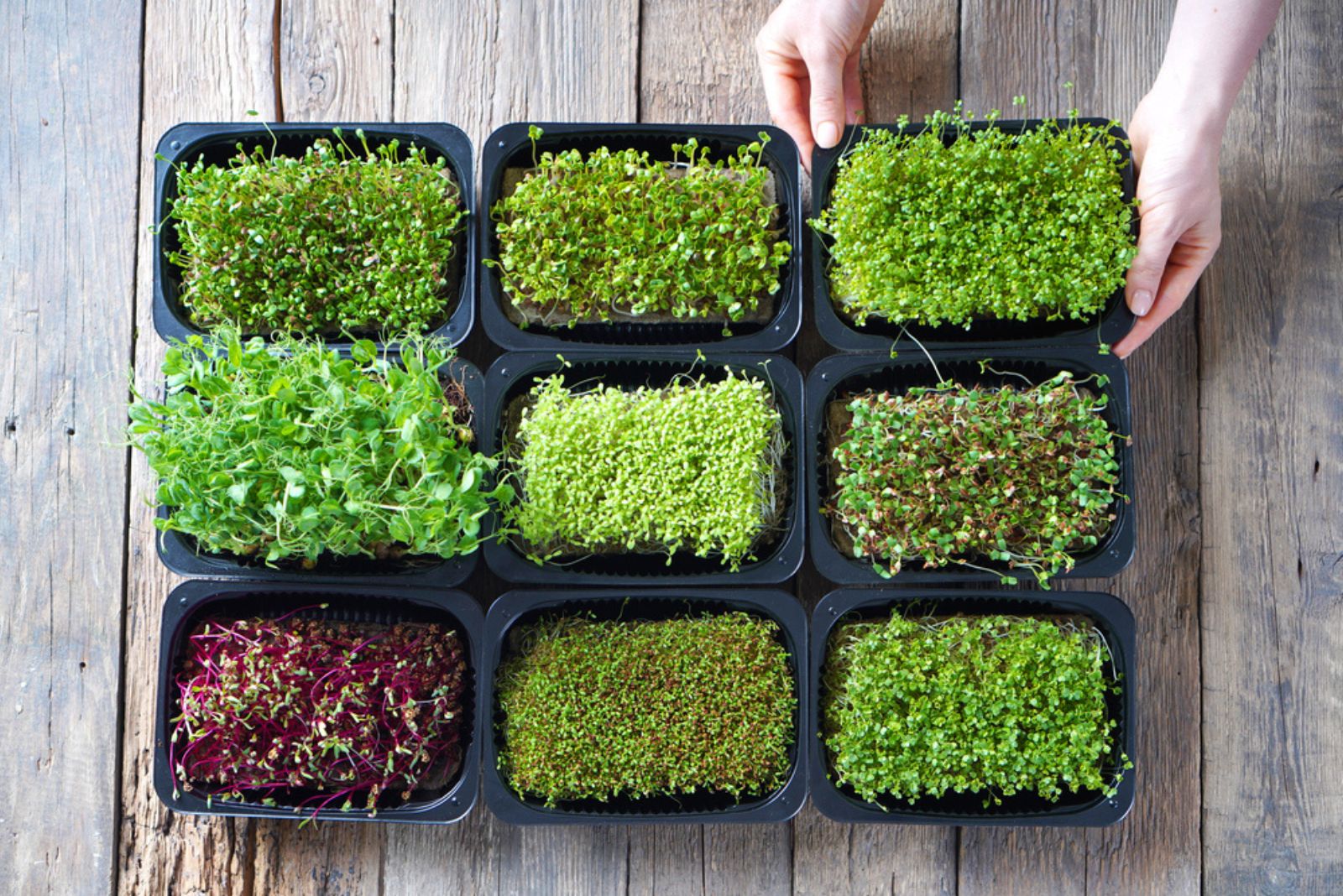Growing microgreens has lately become super popular in the gardening community. When we say microgreens, we are talking about the seed leaves (also called cotyledons) that emerge from the seed after germination
If we leave them to grow, the seedlings would eventually develop into full-sized leafy vegetable and herb crops. But that’s not what we are aiming for here, especially if you don’t have enough garden space.
These tasty microgreens consist of biologically active ingredients like polyphenols and glucosinolates that are proven to lower the risk of some malignancies and cardiovascular diseases.
Recent studies have revealed that some microgreens have higher “bioavailability” than others – this just means that the human body can easily access the nutrients available in the plants.
For instance, red radish sprouts have higher bioavailability of polyphenols than other microgreens, although they have a lower polyphenols concentration. So basically, they readily release nutrients that are absorbed in the human body.
Interestingly, even though microgreens are smaller than their fully grown siblings, they are actually more nutrient-dense. Plus, they are super cute and tiny, which is why they work great as garnishes!
Also read: The Best Greenhouse Vegetables And Tips For Growing Them
Can You Grow Them Indoors?
Luckily, you don’t need a garden to grow these microgreens. Since these are tiny, they won’t take up a lot of space, which is why you can easily grow them indoors. However, this still comes with its challenges.
You will have to meet the plants’ requirements and maintain specific lighting and temperature conditions. If you don’t have a sunny windowsill where you can place your microgreens, I would suggest you invest in a good set of grow lights with continuous LED lighting.
What’s also great is that you can harvest them in a matter of days because they don’t take much time to germinate. Plus, you won’t be needing any fertilizer nor do you have to worry about pests and diseases ruining your tiny greens.
You just have to make sure that they receive enough water, and that they are nice and warm!
Here’s a useful video on how to grow microgreens:
Still, indoor growing allows you to fortify, making them even richer sources of the nutrients our bodies generally need!
According to a 2022 study from the Slovak University of Agriculture in Nitra, selenium levels in a variety of microgreens could be increased by more than 100 times by adding selenium to the growing medium.
In case you didn’t know, selenium is a very important nutrient that can reduce the chances of developing cancer, but it can also protect your cells against infections and damage.
What remains the biggest challenge is storing and extending the shelf life of these seedlings. They have to be immediately consumed because their soft textures make them unable to survive long after harvesting.
But that doesn’t stop us from growing these nutrient- and flavor-rich microgreens. They are low-budget, indoor-friendly, and quite easy to grow. You also get to enjoy fresh and healthy greens whenever you want!
If you are also into hydroponics, then you should check out: 11 Hydroponic Vegetables That Are Easy To Grow


